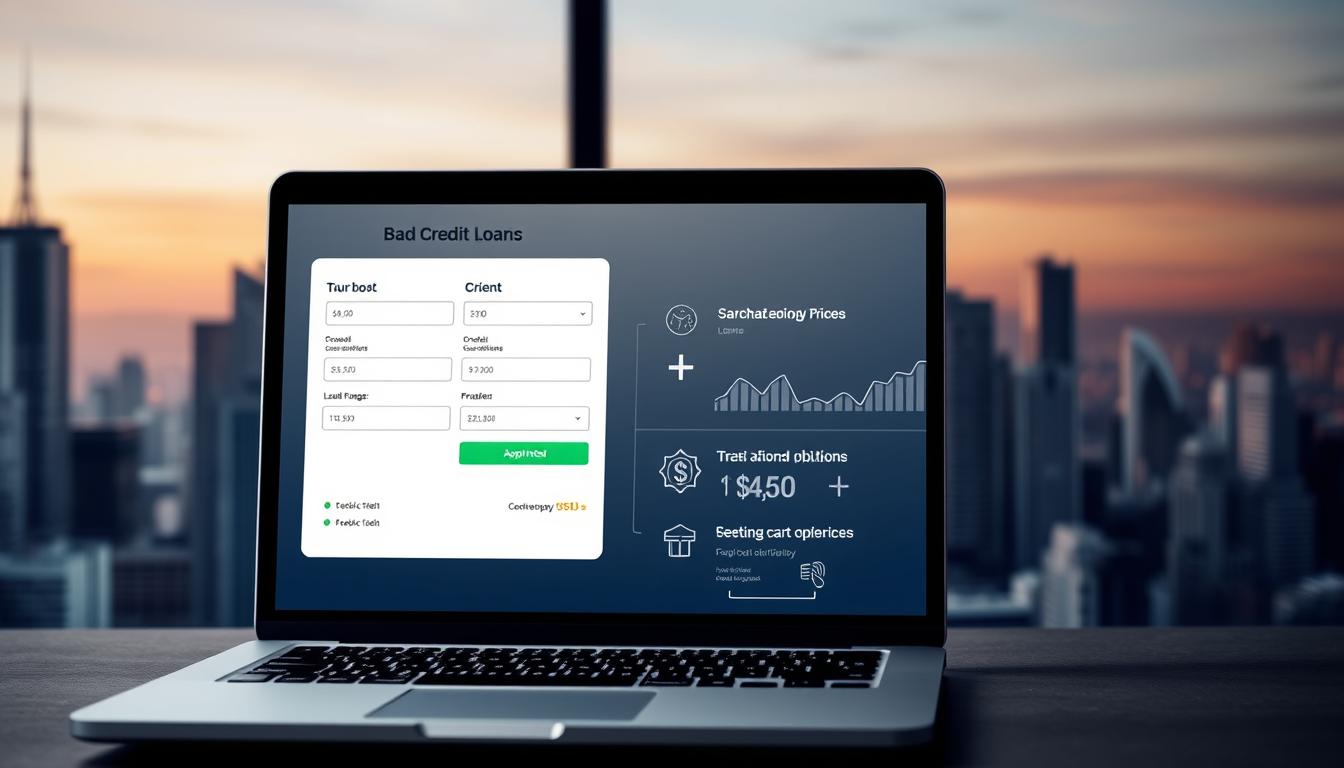College Loans 101: What You Need to Know
College Loans 101: What You Need to Know
Understanding college loans can seem overwhelming. But knowing your options is key to financing your education well. We’ll cover the basics to guide you in making smart financial decisions.
What Are College Loans?
College loans are financial help for students to cover education costs. They are crucial for those needing financial support. We’ll look at the different loan types and how they work.
Types of College Loans
There are mainly two types of student loans: federal student loans and private student loans. Federal loans are split into subsidized and unsubsidized, based on financial need.
- Federal Student Loans: These are government-funded loans with good terms, like fixed rates and flexible repayment. Examples include Direct Subsidized and Unsubsidized Loans.
- Private Student Loans: Banks and other lenders offer these loans. They often have variable rates and stricter repayment terms than federal loans.
How College Loans Work
It’s important to understand college loans to manage your debt well. When you borrow, you’re getting money for school and must repay it with interest. Key points to remember include:
- Loan Disbursement: The loan money goes straight to your school for tuition and fees.
- Interest Accrual: Interest starts accruing soon after you get the loan. For subsidized federal loans, the government covers the interest while you’re in school.
- Repayment: You start repaying after graduation, leaving school, or going below half-time. There are various loan repayment plans to help with payments.
By grasping the basics of college loans, you can better finance your education. We’ll dive deeper into loan details in the next sections.
Federal vs. Private Loans
It’s important to know the difference between federal and private student loans. These options help students and their families pay for college. Choosing the right one is a big decision.
Differences Between Federal and Private Loans
Federal student loans come from the government. They have fixed interest rates and flexible repayment plans. Private loans, on the other hand, are from banks and credit unions. They often have variable interest rates and stricter repayment terms.
Interest rates are a big difference. Federal loans usually have lower fixed interest rates. This makes them easier to manage. Private loans have variable interest rates that can go up, leading to higher costs.
Pros and Cons of Each
Federal loans have many benefits. They offer income-driven repayment plans and loan forgiveness programs. These can help a lot, but there are limits on how much you can borrow.
Private loans can give you more money to cover college costs. But, they have higher interest rates and stricter repayment terms. This makes them riskier.
Choosing between federal and private loans depends on your financial situation and goals. Weighing the pros and cons helps you make the best choice for your needs.
Applying for College Loans
The application process for college loans opens doors to financial aid for students. It’s key to know the steps and the role of the Free Application for Federal Student Aid (FAFSA).
How to Apply for Federal Loans
Starting with the FAFSA is the first step for federal loans. This form helps figure out if you qualify for federal, state, and school aid. You need to be a U.S. citizen or eligible noncitizen, have a valid Social Security number, and be in a degree program.
Key Steps in Applying for Federal Loans:
- Gather needed documents like your Social Security number, driver’s license, and tax returns.
- Fill out the FAFSA form carefully, listing all schools you’re thinking about.
- Send in the FAFSA early to avoid delays.
Understanding the FAFSA Process
The FAFSA is crucial for figuring out your financial aid. It shows your Expected Family Contribution (EFC). Colleges use this to see how much financial help you need.
Tips for a Smooth FAFSA Process:
- Get an FSA ID for online FAFSA signing.
- Use the IRS Data Retrieval Tool to avoid errors.
- Include all colleges you’re interested in, so they get your FAFSA info.
Tips for Applying Successfully
To get financial aid, apply well. This means filling out the FAFSA right and looking into scholarships. Also, know the loan terms and conditions.
Additional Tips:
- Keep good grades to improve your financial aid chances.
- Apply for scholarships for extra funding without debt.
- Read loan offers carefully, understanding interest rates and repayment terms.
Interest Rates Explained
Interest rates are key in figuring out the cost of your college loan. It’s important to understand them to manage your money well.
Fixed vs. Variable Interest Rates
Choosing between fixed and variable interest rates is a big decision for college loans. Fixed interest rates stay the same, making your payments predictable. Variable interest rates can change with the market, possibly raising your loan cost.
Federal loans usually have fixed rates, which are stable. Private loans might have fixed or variable rates, offering choices but adding complexity.
- Fixed Interest Rate Benefits:
- Predictable monthly payments
- Protection from rising interest rates
- Variable Interest Rate Considerations:
- Potential for lower initial interest rates
- Risk of increased rates over time
How Interest Accrues on Loans
It’s crucial to know how interest builds up on your college loans. Interest accrual is when interest is added to your loan balance.
For many student loans, interest grows daily. The formula to find daily interest is the loan balance times the daily interest rate (annual rate divided by 365). This interest then increases the total amount you owe.
To lessen the effect of accrued interest, pay interest while in school or during the grace period. This can lower your loan’s total cost over time.
Loan Limits
Knowing your loan limits is key when financing your education. Loan limits show the max you can borrow through a loan program. These limits change a lot, depending on if it’s a federal or private loan.
Understanding Borrowing Limits
Federal loans have set annual and total borrowing limits. For example, undergrads can borrow up to $12,500 a year for their first year. The total limit for undergrad studies is $31,000. These limits depend on if you’re a dependent student and your academic level.
Private lenders have their own borrowing limits. These limits are based on the college’s cost and your credit score. So, how much you can borrow can differ a lot between lenders.

How to Determine Your Needs
To figure out how much you need to borrow, first look at the total cost of your education. This includes tuition, fees, room, and board, plus other expenses like books and transportation.
Then, check out other financial aid options like grants and scholarships. These can lower how much you need to borrow. It’s also important to think about how loan debt might affect your future finances.
| Loan Type | Annual Limit | Aggregate Limit |
|---|---|---|
| Federal Subsidized | $3,500 – $8,500 | $23,000 |
| Federal Unsubsidized | $5,500 – $20,500 | $31,000 – $57,500 |
| Private Loans | Varies | Varies |
By knowing your loan limits and carefully thinking about your borrowing needs, you can make smart choices about financing your college education.
Repayment Options
Understanding college loan repayment can seem tough. But knowing your options is key to financial freedom. We’ll look at the different repayment plans to help you manage your debt.
Standard Repayment Plans
Standard plans mean fixed monthly payments for a set time, usually 10 years. It’s simple and helps pay off loans fast. Fixed monthly payments make budgeting easier.
For example, a $30,000 loan at 4% interest means about $303 monthly. This is doable for many, easing the financial load.
Income-Driven Repayment Plans
Income-driven plans (IDRs) adjust payments based on your income and family size. They can lower payments and extend repayment. IDRs help those with lower incomes or big families by easing monthly payments.
There are several IDR plans, like Income-Based Repayment (IBR) and Pay As You Earn (PAYE). Each has its own rules and how it calculates payments. For instance, IBR caps payments at 10% or 15% of your discretionary income. Discover more about these plans.
Choosing the right repayment plan is vital for managing college loan debt. Knowing the differences between standard and income-driven plans helps you pick the best for your finances and goals.
As we deal with higher education financing, staying informed about repayment options is crucial. By doing so, we can secure a stable financial future.
Loan Forgiveness Programs
Having part or all of their loan debt canceled is a big draw for borrowers. They look into loan forgiveness programs for this reason. These programs offer relief by canceling debt under certain conditions.

Eligibility Criteria
To get loan forgiveness, borrowers must meet specific criteria. These vary by program. For example, Public Service Loan Forgiveness (PSLF) needs borrowers to work in public service or non-profits and make a set number of payments.
Other programs, like Teacher Loan Forgiveness, focus on certain careers. They have their own rules for who can apply. It’s key for borrowers to know these rules if they might qualify.
Types of Forgiveness Programs
There are many loan forgiveness programs out there. Each has its own rules and benefits. Some top programs include:
- Public Service Loan Forgiveness (PSLF): Forgives loans for those in public service or non-profits.
- Teacher Loan Forgiveness: Helps teachers in low-income schools or specific subjects.
- Income-Driven Repayment (IDR) Forgiveness: Forgives loans for those who’ve made payments under IDR plans.
Knowing about the different loan forgiveness programs and their rules helps borrowers. It lets them make smart choices about their finances and possibly lower their debt.
Managing Your College Loans
Managing college loans needs organization, budgeting, and planning. It’s key to have a good plan to handle college loans. This means keeping track of your loans, knowing how to pay them back, and making payments on time.
Tips for Staying Organized
Staying organized is key when dealing with college loans. Keep all your loan documents in one place. This can be a digital folder or a physical binder. Check and update this info often to stay on top of your finances.
Also, set reminders for when payments are due. Use digital calendars or budgeting apps to stay on track and make payments on time.
Utilizing Budgeting Tools
Using budgeting tools is a smart way to manage college loans. Apps and spreadsheets help track your money. They make it easier to set aside money for loan payments.
These tools also help find ways to save money. By using them, we can make smart money choices and stick to our loan repayment plans.
By staying organized and using budgeting tools, we can manage our college loans well. It’s about making a plan that works and sticking to it. This way, our college loans won’t weigh us down in the long run.
Impact on Credit Score
Your credit score can change based on how you handle college loans. It’s key to understand how this affects your financial health.
Credit Score Implications
Managing college loans well is important. Lenders share your payment history with credit bureaus. Making timely payments on your student loan options can really help your score.
But, missing payments or defaulting can hurt your score a lot. It’s crucial to keep up with your loan repayment plans to avoid these problems.
Building a Healthy Credit History
To improve your credit, try these tips:
- Always make loan payments on time.
- Don’t borrow more than you need to keep your credit utilization low.
- Check your credit report often for mistakes.
- Think about consolidating loans to make payments easier and lower your risk of missing a payment.
By following these steps, you can make your credit score better. This will help you get financial aid for college and other credit products later on.
| Action | Impact on Credit Score |
|---|---|
| Timely Payments | Positive |
| Missed Payments | Negative |
| Loan Consolidation | Neutral/Positive (if simplifies payments) |
Resources for Borrowers
Dealing with college loans can be tough. But, there are many resources to help borrowers make smart choices. It’s important to have reliable info and guidance to manage college loans well.
We have many tools to help us understand college financing. These tools offer support and advice at every step of the borrowing process.
Government Resources
Government websites are a top source for borrowers. The Federal Student Aid website is full of info on loans, repayment plans, and forgiveness programs. It has tools and calculators to help borrowers understand their loans and plan their finances.
Some key features of government resources include:
- Detailed explanations of loan types and terms
- Guidance on the application process for federal loans
- Information on repayment options and loan forgiveness programs
Non-Profit Organizations
Non-profit groups also help borrowers a lot. Organizations like the National Foundation for Credit Counseling (NFCC) offer financial counseling, education, and advocacy. They help borrowers understand their loan options and manage their debt.
Some benefits of using non-profit resources include:
| Service | Description | Benefit |
|---|---|---|
| Financial Counseling | Personalized advice on managing debt | Helps borrowers create a tailored plan for loan repayment |
| Financial Education | Workshops and resources on financial literacy | Empowers borrowers with knowledge to make informed financial decisions |
| Advocacy | Support in dealing with lenders and loan servicers | Assists borrowers in resolving issues and understanding their rights |
By using these resources, borrowers can better understand their loan options. They can also develop good strategies for managing their debt. We suggest borrowers check out these resources to make smart choices about their college loans.
Common Myths About College Loans
The world of college loans is full of myths. It’s important to know what’s true and what’s not. Many students and parents don’t fully understand their financial aid options.
Debunking Misconceptions
Many think all student loans are the same. But, federal and private loans differ a lot. Federal loans usually have lower interest rates and better repayment plans than private loans.
- Federal Loans: Typically offer fixed interest rates and income-driven repayment plans.
- Private Loans: May have variable interest rates and less flexible repayment terms.
Some believe loan forgiveness is easy to get. But, it’s not that simple. Programs like Public Service Loan Forgiveness (PSLF) have strict rules. Not everyone can qualify.
Truths You Should Know
Knowing the real facts about college loans is key. Here are some important truths:
- Loan Terms Vary: Different loans have different terms, including interest rates and repayment periods.
- Repayment Options: Borrowers have various repayment options, including standard and income-driven plans.
- Forgiveness Eligibility: Not all borrowers are eligible for loan forgiveness; specific criteria must be met.
By knowing these truths and avoiding myths, students and parents can make better choices. They can better understand how to finance their education.
Future of College Loans
Higher education financing is getting more complex. We need to watch trends in student borrowing and possible changes in college financing. Rising tuition and more private loans are big factors.
Emerging Trends
The world of student loan options is always changing. New plans, like the “Repayment Assistance Plan,” are coming. They let borrowers pay back loans based on their income.
Shaping the Future
Looking ahead, changes in loan forgiveness and new financial aid could change how we finance college. Keeping up with these trends helps borrowers and policymakers get ready for the future.









